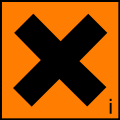Introduction
FRAGRANCE is Allergen of the Year for 2007! I applaud this choice because it provides a chance to review how allergic reactions to fragrance have been and will be diagnosed. We can also examine the issue of clinical relevance as it relates to the true prevalence of fragrance-induced allergic contact dermatitis.
There are more than 2,800 fragrance ingredients listed in the database of the Research Institute for Fragrance Materials, Inc. (RIFM). At least 100 of these ingredients are known allergens.[1] New chemicals are frequently introduced. Botanical ingredients used in fragrances can also cause allergic reactions but are not included in this commentary.[2]
Fragrances are complex substances. One perfume may contain hundreds of different chemicals. Trying to pinpoint specific fragrance allergens has challenged patch testers for years. The fragrance industry is both lucrative and competitive. The composition of a successful fragrance compound is an asset, which has led to a situation in which the fragrance industry is not always eager to disclose the chemicals it uses.
In the late 1970s, Walter G. Larsen became interested in persons who were allergic to fragrances. He was able to collect the ingredients of the perfume in Mycolog cream (Bristol-Myers Squibb, Princeton, NJ) and found eight patients who were allergic to one or more of the 28 components of this perfume.[3] Interestingly, all eight patients also reacted positively to ethylenediamine.
In 1977, Dr. Larsen evaluated 20 patients (5 were in the Mycolog group) who were "perfume sensitive."[4] He tested them with 30 chemicals he had obtained from RIFM; the North American Contact Dermatitis Group (NACDG) preservative, perfume (15 chemicals), and standard series; components of balsam of Peru; and a few other chemicals he had collected. The results of Dr. Larsen's testing, described in his 1977 article, are almost universally credited as the source of the composition of the fragrance mix that has been used internationally ever since to diagnose fragrance-allergic patients.[4]
In fact, the present mix does contain some but not all of the common allergens noted in the 1977 article. Jasmine synthetic (the most common reactor) was not included in the mix, nor was treemoss absolute. Instead, oakmoss absolute was included, and α-amyl cinnamic aldehyde (amyl cinnamal) was used instead of the alcohol.
Dr. Larsen told me recently that there is no one article that describes the creation of fragrance mix I (FM I). No one seems to know why or when the α-amyl cinnamic alcohol was changed to the aldehyde. No matter; the eight ingredients in the original fragrance mix have remained unchanged since the late 1970s save for the lowering of their total concentration from 16% to 8% in 1984. Sorbitan sesquioleate at 5% was added as a detergent along the way.[5] The eight ingredients of FM I, all at 1%, are as follows:
Evernia prunastri (oak moss) extract
Isoeugenol
Eugenol
Cinnamal
Hydroxycitronellal
Geraniol
Cinnamyl alcohol
Amyl cinnamal
In the late 1970s, Dr. Larsen gave several vials of the eight-component mix he had formulated to Dr. Jon Hanifin, who carried them on his sabbatical to Copenhagen, Denmark. Dr. Hanifin gave the vials to Dr. Niels Hjorth of Gentofte Hospital, who included them in the series of the International Contact Dermatitis Research Group. The rest is history!
Dr. Larsen's initial articles had seven and eight references, respectively. Recent reviews of fragrance reactions have had hundreds of references.[6] There is great interest in this subject.
Frequency of Fragrance Allergy
For many years, fragrance mix produced the fourth or fifth most frequent patch-test reaction seen by the NACDG. At present, patch-test reactions to fragrance mix are fourth in frequency (at an incidence of 10.4%), as compared with reactions to nickel (16.7%), neomycin (11.6%), balsam of Peru (11.6%), gold (10.2%), and quaternium-15 (9.3%).[7]
It is important to note that these data record the frequency of patch-test reactions, not allergic contact dermatitis caused by fragrances. Allergy is a disease (allergic contact dermatitis [ACD]) whereas a positive patch-test result is an allergic reaction. One may be allergic (ie, by patch testing) to gold or poison oak but seldom develop gold or poison oak ACD (allergy). Despite this important difference, many or even most articles about fragrances refer to the great frequency of "fragrance allergy" and imply that fragrances are associated with a good deal of clinical contact dermatitis. One such article noted that only 39% of the 8.5% of women reacting positively to fragrance mix had positive reactions to at least one constituent of the mix and that only 50% of the 6.7% of men reacting positively to fragrance mix had positive reactions to one constituent.[8] The article never discussed clinical disease or relevance. In short, articles about "fragrance allergy" are often no more than documentations of the frequency of patch-test reactions. In my opinion, the imprecise language used in this literature has led clinicians to believe that fragrance allergy (clinical ACD) is much more common than it really is.
It is not surprising that many people have positive patch-test reactions to fragrance mix, which contains constituents still widely used in ordinary fragrances found in cosmetics and household products. Five hundred sixty-two Scandinavian babies (ages 3-18 months) had no reproducible fragrance mix reactions, but we know that 1.7 to 4.1% of the general population and 10.4% of North American patients evaluated for ACD have positive reactions to fragrance mix.[1,7,9] Fragrance mix constituents are good allergens; thus, frequent exposures to them (like frequent exposures to thimerosal) are likely to cause sensitization and allergic patch-test reactions but not necessarily clinical allergy (ie, ACD).
Relevance of Positive Reactions to Fragrance Mix Patch Tests
The NACDG designates "present" relevance for an allergen as "definite" when the product or object use-test reaction or patch-test reaction is also positive, as "probable" when the allergen is found to be present in the patient's contactants, and as "possible" when the allergen is likely to be in the patient's environment.[7] For all categories, the distribution of the dermatitis must fit as well. Although present relevance (the combination of definite, probable, and possible relevance) in the 2001-2002 NACDG data is 83.5% for fragrance mix, definite relevance is only 1.8%, probable relevance is 17.2%, and possible relevance is 64.5%.[7] In fact, in North America we have no idea what is in most fragrances, and thus even designations of probable relevance are suspect. Actual perfumes or fragrances added to products are seldom used in patch testing by the NACDG.
Even the most critical reviews of NACDG fragrance data lump all relevance categories together and cite a present relevance of 64 to 87%, depending on the data set reviewed.[1,6]
Before the presentation of the NACDG's 1998-2000 data in 2003, the definite, probable, and possible relevance categories were lumped together as "present" relevance.[10] The categories are now separate, and the most recent data report contains this comment: "The relevance of fragrance allergy is difficult to determine, and because this is done inconsistently, the relevance values are highly controversial."[7]
In Europe, analytical studies showed that patients with positive results on fragrance mix patch tests were using products that almost always contained one to six of the fragrance mix constituents, which explained their then present or past episodes of dermatitis.[11] The patients also had positive patch-test or use-test reactions to the products; thus, all criteria for definite present relevance were met.
Such studies have not been done in North America. Fragrance ingredients are similar but different in North America and in Europe.[6] Until we analyze the fragrance ingredients of products in North America and test patients with them, as has been done in Europe with European products, we must question the actual prevalence and relevance of true fragrance allergy here.
A New Fragrance Mix
In 2005, a six-center European and Scandinavian study presented a new six-ingredient fragrance mix (fragrance mix II [FM II]).[12] Testing with a total concentration of 14% for its ingredients, the investigators found that 32% of all patients who had positive reactions to FM II had negative reactions to FM I.[12] Of patients with a "certain" fragrance history, 35% had positive reactions to FM II and negative reactions to FM I.
The constituents of FM II are as follows:
Citronellol 0.5%
Hydroxyisohexyl 3-cyclohexene carboxaldehyde (Lyral) 2.5%
Hexyl cinnamal 5.0%
Citral 1.0%
Coumarin 2.5%
Farnesol 2.5%
FM II is available from Chemotechnique Diagnostics AB (Malmö, Sweden and Hermal, Reing, Germany). It does not contain sorbitan sesquioleate.
Frosch and colleagues identified five of their FM II ingredients in 50 to 88% of 24 products obtained from 12 of their allergic patients. Only farnesol was not detected.[12] When the individual ingredients were tested separately, Lyral most often yielded positive reactions, hexyl cinnamal least often, and coumarin never. Only 48% of their patients who reacted positively to FM II reacted to at least one of the mix ingredients. Low-grade irritancy and frequent + reactions were common.
The percentage of positive reactions to individual mix ingredients, frequent irritancy, and low-grade positive reactions are equally common with FM I.[6,8,12] Mixes are always problematic. The failure of individual fragrance ingredients in either mix to reproduce positive reactions has long troubled patch testers and made them question the validity of these mixes. It helps to know of this reality when interpreting these patch tests. Concepts such as "quenching" or the development of new allergens in the mixes have satisfied no one.[6,13]
It is likely that as more is learned about the ingredients of fragrances in different countries, fragrance mixes will become more tailored to the country. For example, in a recent collection of 1,603 patients in North America who were patch-tested to investigate eczematous dermatitis, only 7 patients reacted to Lyral at a concentration of 5% (it is 2.5% in FM II). Of these 7 reactions, 5 were +, 1 was ++, and 1 was +++.[14] The intensity of fragrance reactions has been tied to the likelihood of relevance by other investigators.[5] Although the study by Frosch and colleagues found Lyral to be most often reactive in FM II. Lyral reactions are clearly uncommon in North America.[12,14]
Even though we in North America lack much of the precise chemical information collected by the Europeans, and even though we know fragrances differ in different countries, it is still likely that FM II will add to the information we collect from patch-testing our patients. The NACDG will add FM II to its 2007 standard tray, and I recommend this to the reader as well.
Regulation of Fragrance Ingredients
Recently, the European Union (EU) designated 26 fragrance allergens as requiring labeling on cosmetic and detergent products.[15] This labeling must occur if the concentration of the designated ingredient exceeds 100 parts per million (ppm) for a rinse-off product and 10 ppm for a leave-on product. International Nomenclature of Cosmetic Ingredients (INCI) names must be used.[13,16] Table 1 lists all the FM I and FM II ingredients plus others.
It is difficult to fully comprehend the criteria used for the inclusion of these chemicals. Not everyone agrees with the selection of the 26 allergens.[13] Nonetheless, such labeling is a start, and if patients know what chemicals they are allergic to, they can avoid or cautiously use the suspect products. For example, this has recently permitted an analysis of washed fabrics in regard to 24 of the 26 EU allergens. The EU list allowed the investigators to determine that the likelihood that fragrances left on fabrics by laundering could cause a clothing pattern dermatitis was very low as their threshold concentrations were below induction levels.[17]
Once it is known with certainty just what chemicals are used frequently in fragrances and whether or not they are common allergens, selective and rational labeling will make even more sense.
Regulation of the Fragrance Industry
The fragrance industry is self-regulated. This is largely accomplished by a close relationship between RIFM and the International Fragrance Association (IFRA) and by a spirit of cooperation between RIFM and the Food and Drug Administration (FDA).
RIFM was founded in 1966 by fragrance raw-material suppliers, compounders, and end-user companies. They wanted research done on ingredients used in fragrances, to ensure the safety of those fragrances.[18] All of the RIFM's scientific efforts are reviewed by an independent expert panel of academic dermatologists, toxicologists, and environmental scientists. The RIFM Expert Panel's conclusions on safe use, based on its critical evaluation of all available safety data and exposure information, form the basis of the IFRA Standards. RIFM, located in New Jersey, has published 1,100 monographs on fragrance ingredients of some 2,800 used in the industry; 80 to 90% of these ingredients are synthetic. The monographs are available to members of the American Contact Dermatitis Society on their "members only" Web site
http://www.contactderm.org. Although this information is not on the RIFM Web site, the monographs and their replacement documents (group summaries and Fragrance Material Reviews) are published in Food and Chemical Toxicology and can also be obtained directly from RIFM (Anne Marie Api, PhD, vice president, Human Health Sciences, RIFM, personal communication, July 2006).
In 1973, IFRA was formed. Registered in Geneva, Switzerland, and with its main operating offices in Brussels, Belgium, IFRA publishes standards for the safe use of fragrance ingredients, based on the outcome of safety evaluations carried out by the RIFM Expert Panel. IFRA has no impact on the content of the standards but is responsible for their distribution and enforcement. The standards are binding for the IFRA membership, which covers the major countries and regions of the world. Eight to ninety percent of the world's fragrances are supplied by IFRA members.[19]
IFRA's Code of Practice currently contains over 100 IFRA Standards for fragrance ingredients; about 40 standards prohibit certain fragrances, and about 65 others put various limitations on their use. This information is available on the IFRA Web site (
http://www.ifraorg.org).
The FDA bans about 10 chemicals used in fragrances and does not actively regulate this industry.[6]
In the past, researchers in this area have felt that accessing information from the industry was very difficult. Both RIFM and IFRA are making efforts to be more accessible. In fact, IFRA has indicated that it will help dermatologists identify specific allergens in fragrances they feel are causing ACD in their patients. The IFRA Web site describes how this can be accomplished.
Summary
Fragrance is Allergen of the Year, and a very good choice it is. Fragrance mix I (FM I) is used in patch testing to diagnose the potential for clinical allergy. Allergens in this mix are found in 15 to 100% of cosmetic products (especially deodorants).[1] Reactions to FM I are the second to fifth most common patch-test reactions in series around the world. Testing FM I-allergic patients with ingredients of the mix is successful only about 50% of the time. Many of these FM I patch-test reactions are often weak, perhaps irritant, and hard to reproduce.
Present clinical relevance for fragrance patch-test reactions has been claimed in the literature without acknowledging that conditions meeting the criteria for definite or probable relevance almost never occur and that even possible relevance is hard to call because investigators do not know what is in North American fragrances.[7]
New fragrance chemicals are constantly introduced. The fragrance mix II (FM II), developed by six European centers, has been well studied, and this should add more information for patients.[12] Reading reactions to FM II entails the same potential problems that were just mentioned in regard to FM I.
In short, many persons are allergic to fragrances (ie, have positive patch-test reactions), but few of these individuals have clinical allergies to fragrances (allergic contact dermatitis). When we dermatologists advise our patients to avoid all fragranced products on the basis of a very weak positive (maybe irritant) fragrance mix patch-test reaction, we deprive them of one of life's pleasures. The effect of the new European Union labeling regulation will be watched with great interest. Certainly, patients with very strong product fragrance material use-test or patch-test reactions should be urged to use more caution when selecting scented products.[5]
Fragrance patch-test reactions remind dermatologists that they help their patients most when they critically evaluate patients' reactions and do their best to accurately ascertain clinical relevance. So much mystery still surrounds fragrances and perfumes that many people seek "natural" scents... and therein lies yet another story.[2]












